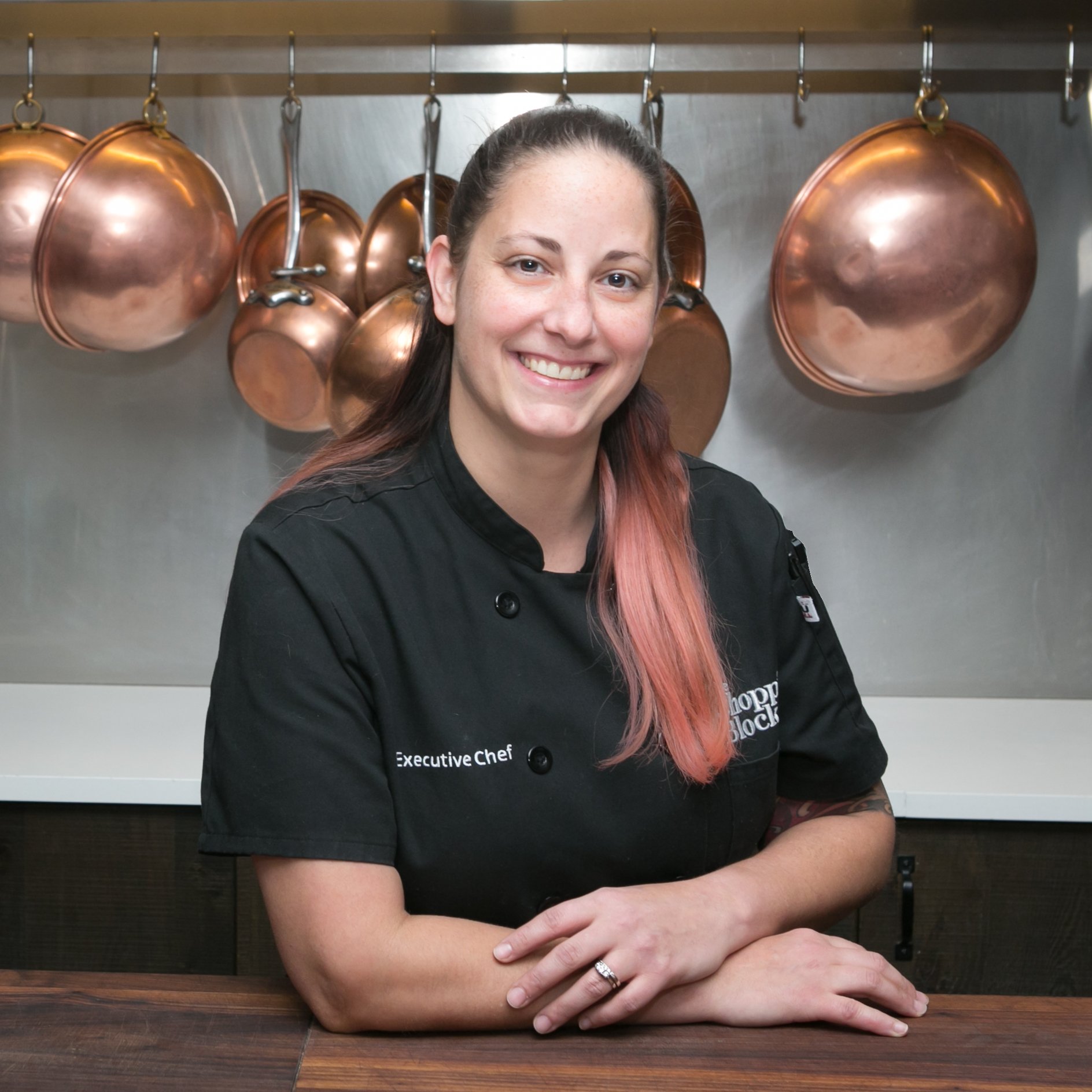Many people suffer from food allergies, and it can be difficult to know what or how to cook to avoid allergens and still make food taste good. As many chefs in the restaurant industry may know, but maybe not all home cooks are aware of: there are nine big allergies to be aware of in order to be safe in the kitchen. Our staff takes an allergen safety course to be compliant with city and state guidelines to make sure there is no cross contamination, no hidden ingredients in prepared foods and that cooks adhere to cleanliness standards. We do it all to keep you safe!
Food allergies are no joke, and we take them seriously at The Chopping Block. We strive to be able to accommodate everyone in our kitchens even if they have allergies or dietary restrictions. Everyone deserves to be able to learn how to cook for themselves! Even if you are not a professional chef and are throwing a dinner party with all your friends, double check for allergies so you can be prepared to cook accordingly.
I was at the Lincoln Square Farmer's Market a few weeks ago doing a demonstration of a cous cous salad with an assortment of produce. When I was plating the dish, I topped it off with almonds. Suddenly, I heard an audience member shout “No nuts!” Of course, I was happy to oblige because I wanted them to be able to enjoy the salad and omitting a garnish is simple enough.
But what happens when you have a more intricate recipe that may not be so simple to accommodate the allergen? Hopefully I can help! The first line in defense is always, always, always read the labels! There are hidden allergens everywhere. Most of the time just omitting the ingredient will not make or break the dish. There are many similar ingredients that can be substituted in recipes and often there is a work around for avoiding allergies.
Big 9 Allergens
1. Milk
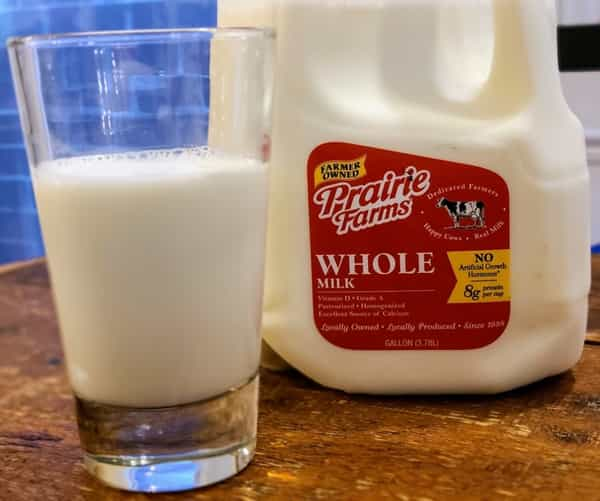 Most milk allergies stem from cows' milk but doctors recommend avoiding other animal milks to be safe. Anything that lists casein on the label should be avoided if you have a dairy allergy, and you may be surprised to know that this is hidden in things like margarine, tuna, semisweet chocolate, cheese-flavored chips and even some soy milks have casein added. Using dairy free milk alternatives are a great substitute. I personally like using oat and coconut milks the best especially in savory applications because I find they have a better thickness that can stand up to the heat. You can easily make this chocolate pudding with dairy free chocolate and milk substitutes. Instead of whipped cream, I am obsessed with frozen coconut whip, it's like cool whip but dairy free.
Most milk allergies stem from cows' milk but doctors recommend avoiding other animal milks to be safe. Anything that lists casein on the label should be avoided if you have a dairy allergy, and you may be surprised to know that this is hidden in things like margarine, tuna, semisweet chocolate, cheese-flavored chips and even some soy milks have casein added. Using dairy free milk alternatives are a great substitute. I personally like using oat and coconut milks the best especially in savory applications because I find they have a better thickness that can stand up to the heat. You can easily make this chocolate pudding with dairy free chocolate and milk substitutes. Instead of whipped cream, I am obsessed with frozen coconut whip, it's like cool whip but dairy free.
2. Eggs
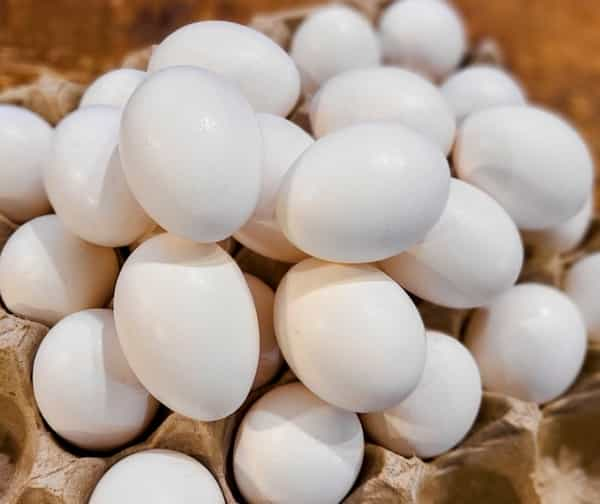 It is recommended that if you have an egg allergy you should avoid all animal eggs to be safe but also all powdered eggs as well. Eggs can be found not only in baked goods but also salad dressings, pretzels, meatballs/meatloaf, and sometimes even tortillas. Check labels for ingredients like albumin, meringue, or lecithin, which indicate the presence of eggs. Some alternatives such as tofu, chia seeds, flax, applesauce, mashed bananas can be used in baked goods recipes instead of eggs. Egg free dessert recipes have come a long way from meringue to key lime pie that are both egg free and delicious!
It is recommended that if you have an egg allergy you should avoid all animal eggs to be safe but also all powdered eggs as well. Eggs can be found not only in baked goods but also salad dressings, pretzels, meatballs/meatloaf, and sometimes even tortillas. Check labels for ingredients like albumin, meringue, or lecithin, which indicate the presence of eggs. Some alternatives such as tofu, chia seeds, flax, applesauce, mashed bananas can be used in baked goods recipes instead of eggs. Egg free dessert recipes have come a long way from meringue to key lime pie that are both egg free and delicious!
3. Soy
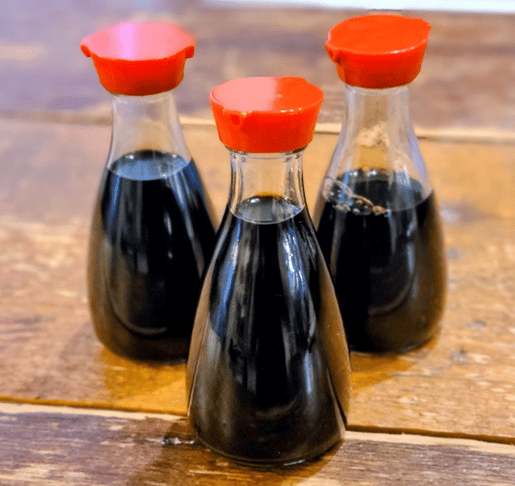 If you have a soy allergy, you need to do more than skip soy sauce and tofu. Soybeans are a big part of processed foods, too. Edamame, miso, shoyu sauce, soy-based milk, yogurt, ice cream, or cheese, soy protein, tamari, tempeh, teriyaki sauce should all be avoided. Soy lecithin does not always cause a reaction for people who are allergic to soy, but it is always a possibility. This ingredient acts as an emulsifier and thickener which is found in a ton of processed sauces and foods. Other items that you may not know have soy in them are deli meats, ice cream, frozen dinners, canned soups, or tuna to name a few. Liquid aminos are a really good sub for soy sauce or whenever you need a salty/umami pop of flavor.
If you have a soy allergy, you need to do more than skip soy sauce and tofu. Soybeans are a big part of processed foods, too. Edamame, miso, shoyu sauce, soy-based milk, yogurt, ice cream, or cheese, soy protein, tamari, tempeh, teriyaki sauce should all be avoided. Soy lecithin does not always cause a reaction for people who are allergic to soy, but it is always a possibility. This ingredient acts as an emulsifier and thickener which is found in a ton of processed sauces and foods. Other items that you may not know have soy in them are deli meats, ice cream, frozen dinners, canned soups, or tuna to name a few. Liquid aminos are a really good sub for soy sauce or whenever you need a salty/umami pop of flavor.
4. Peanuts
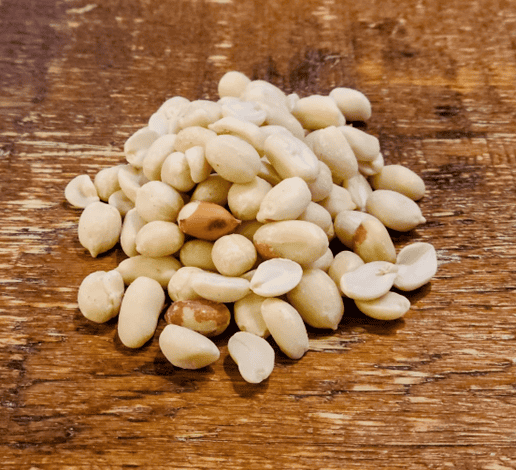 This is the most common and most deadly of all the food allergies on this list. Sometimes just a little peanut powder is enough to send someone into anaphylaxis. Peanuts are different from tree nuts. They grow underground and are part of the legume family. Other examples of legumes include beans, peas, lentils, and soybeans. All of these make great alternates for peanuts, but here is where it can get tricky. Just because someone is allergic to peanuts doesn’t mean they are allergic to tree nuts, but it is possible. So, it is best to avoid all when unsure.
This is the most common and most deadly of all the food allergies on this list. Sometimes just a little peanut powder is enough to send someone into anaphylaxis. Peanuts are different from tree nuts. They grow underground and are part of the legume family. Other examples of legumes include beans, peas, lentils, and soybeans. All of these make great alternates for peanuts, but here is where it can get tricky. Just because someone is allergic to peanuts doesn’t mean they are allergic to tree nuts, but it is possible. So, it is best to avoid all when unsure.
Also, having a peanut allergy doesn’t mean you are necessarily allergic to other legumes either but once again it could be a possibility but rarely. Seeds, sunflower butter, crispy rice cereal or puffed grains like quinoa or farro make excellent replacements for peanuts. I also like using panko breadcrumbs or toasted oats for crunch. Peanuts like to hide in things like coffee, cereals, baked goods, energy bars, even French fries… people often forget about peanut oil in deep fryers as a cross contamination culprit.
5. Tree Nuts
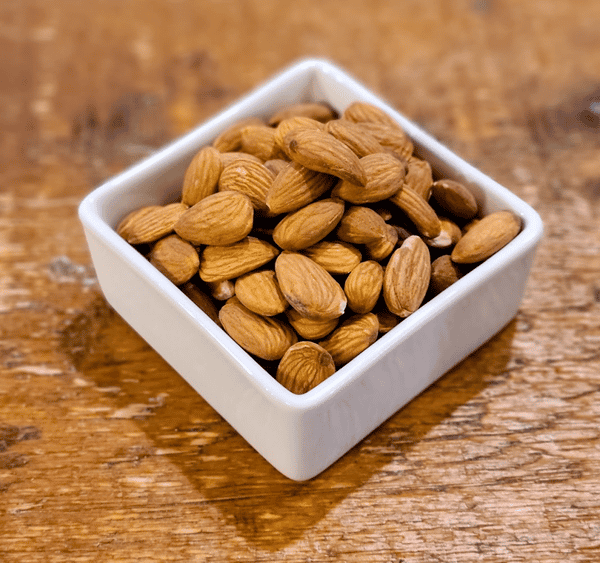 Almonds, hazelnuts, Brazil nuts, pistachios, cashew, pecans, and walnuts make up this group. According to the American Academy of Allergy, Asthma, and Immunology, an allergy to one tree nut does not necessarily mean an individual is allergic to other tree nuts, but certain tree nuts are closely related, including cashew with pistachio and pecan with walnuts. They also usually tolerate macadamia nut and pine nut, which are also both seeds. Being allergic to tree nuts can be quite difficult because they are hidden everywhere. Very similar to my recommendations above, tree nuts can be swapped for all of the seeds, toasted grains, toasted coconut. I love roasting chickpeas or edamame until crunchy and then use them in place of nuts.
Almonds, hazelnuts, Brazil nuts, pistachios, cashew, pecans, and walnuts make up this group. According to the American Academy of Allergy, Asthma, and Immunology, an allergy to one tree nut does not necessarily mean an individual is allergic to other tree nuts, but certain tree nuts are closely related, including cashew with pistachio and pecan with walnuts. They also usually tolerate macadamia nut and pine nut, which are also both seeds. Being allergic to tree nuts can be quite difficult because they are hidden everywhere. Very similar to my recommendations above, tree nuts can be swapped for all of the seeds, toasted grains, toasted coconut. I love roasting chickpeas or edamame until crunchy and then use them in place of nuts.
6. Fish
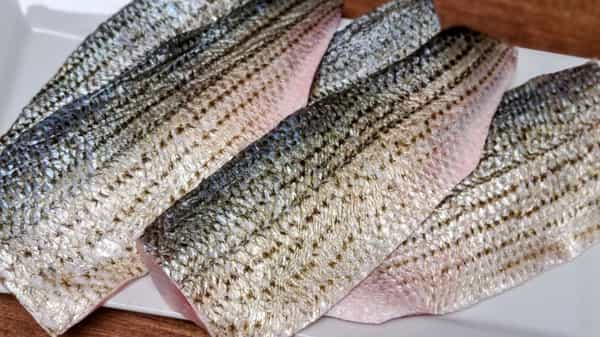 The most common fish that cause allergies are tuna, salmon, and halibut although all finfish may cause reactions. There may not be an exact replica for a fish fillet as we know it, but plant-based seafood is out there. I have not tried it myself, but I have seen “breaded fish sticks” containing no fish at all! Flavoring a blank canvas like tofu can easily take the place of fish on your plate. Beware of hidden fish in condiments, though. Ingredients like Worcestershire sauce and some tomato sauces may have anchovies, Caesar dressing, and even barbeque sauces may contain fish. I have seen vegan fish sauce in the grocery store. Items like soy, seaweed, mushrooms, help mimic the taste of umami and the sea for seasoning with fish alternatives.
The most common fish that cause allergies are tuna, salmon, and halibut although all finfish may cause reactions. There may not be an exact replica for a fish fillet as we know it, but plant-based seafood is out there. I have not tried it myself, but I have seen “breaded fish sticks” containing no fish at all! Flavoring a blank canvas like tofu can easily take the place of fish on your plate. Beware of hidden fish in condiments, though. Ingredients like Worcestershire sauce and some tomato sauces may have anchovies, Caesar dressing, and even barbeque sauces may contain fish. I have seen vegan fish sauce in the grocery store. Items like soy, seaweed, mushrooms, help mimic the taste of umami and the sea for seasoning with fish alternatives.
7. Shellfish
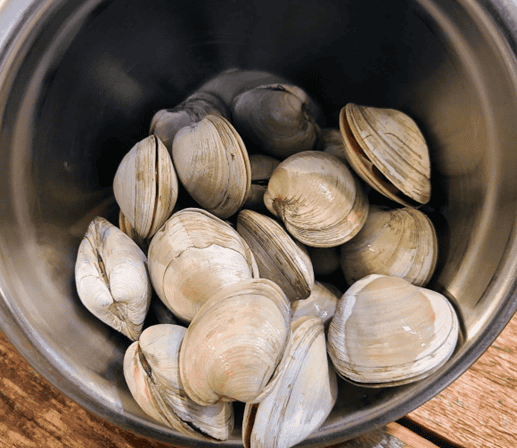 There are two groups of shellfish to be aware of: crustaceans and mollusks. Crustaceans include lobster, crab, sea urchin and shrimp which is the most common offender in this category. Mollusks include bivalves which are oysters, mussels, scallops, clams; cephalopods which include octopus, squid, and cuttlefish; as well as snails, conch, abalone which are univalves. Most of the time if you are allergic to one of the groups you will have a reaction to the other group but not always. It is best to steer clear of all of these to be absolutely sure. Condiments, ground meat products, and Asian food use a lot of hidden shellfish. MSG, seaweed, soy, mushrooms are all possible swaps for shellfish. I also used jackfruit or hearts of palm to make great faux crab cakes.
There are two groups of shellfish to be aware of: crustaceans and mollusks. Crustaceans include lobster, crab, sea urchin and shrimp which is the most common offender in this category. Mollusks include bivalves which are oysters, mussels, scallops, clams; cephalopods which include octopus, squid, and cuttlefish; as well as snails, conch, abalone which are univalves. Most of the time if you are allergic to one of the groups you will have a reaction to the other group but not always. It is best to steer clear of all of these to be absolutely sure. Condiments, ground meat products, and Asian food use a lot of hidden shellfish. MSG, seaweed, soy, mushrooms are all possible swaps for shellfish. I also used jackfruit or hearts of palm to make great faux crab cakes.
8. Wheat
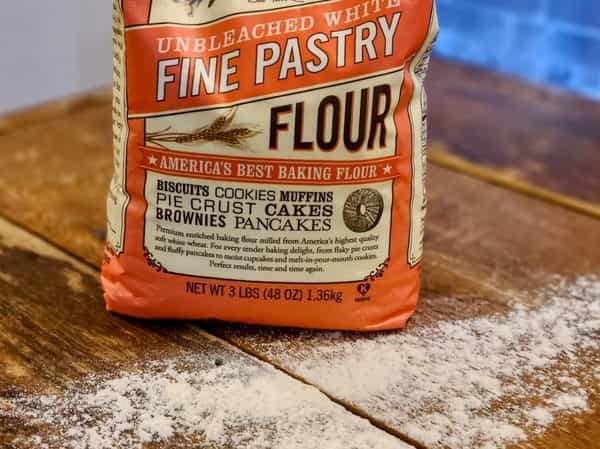 A wheat allergy is a type of food allergy that occurs when your immune system mistakenly triggers a defensive response to wheat. Not to be confused with gluten which is a protein found in grains, such as wheat, barley and rye. Some people are allergic to wheat, but that is not the same as a gluten allergy. Gluten allergy is a misleading term commonly confused with wheat allergy, or sometimes celiac disease. There is no such thing as a gluten allergy, but there is a condition called Celiac Disease.
A wheat allergy is a type of food allergy that occurs when your immune system mistakenly triggers a defensive response to wheat. Not to be confused with gluten which is a protein found in grains, such as wheat, barley and rye. Some people are allergic to wheat, but that is not the same as a gluten allergy. Gluten allergy is a misleading term commonly confused with wheat allergy, or sometimes celiac disease. There is no such thing as a gluten allergy, but there is a condition called Celiac Disease.
We have many gluten free classes on rotation at The Chopping Block, and I would say that the wheat allergy is the easiest to accommodate in most of our class offerings. There are so many alternative flours and even gluten free all-purpose flour blends that work wonderfully in most recipes. But it is the most frequently found hidden in the most random ingredients. For our sushi class, there is wheat in the surimi and the unagi but that doesn’t mean you can't enjoy the salmon, tuna, and veggies! But did you know that it can sometimes be in shredded cheeses, cheese sauce, soy, store bought stocks/broths/bouillon, things that say malt or malted imply wheat, and even prepackaged rice or noodle packets?
9. Sesame
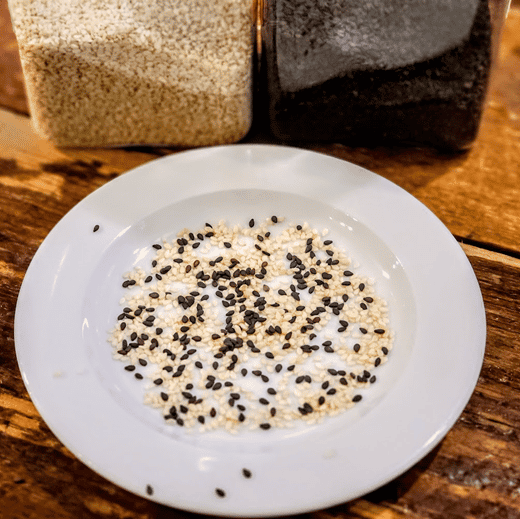 This is the newest allergy to hit the list. Sesame seeds and products derived from sesame are becoming more recognized as a common allergen. Check labels for sesame seeds, tahini, or sesamol. There are so many other seeds that can be used in place of sesame. Besides the usual suspects like pumpkin seeds, chia, or flax, try poppy seeds or even hemp seeds. Instead of tahini, you can thin out nut butters or use sunflower butter instead. Tahini is most commonly found in hummus, but if you use any flavorful puree or condiment blended with chickpeas, you won’t miss it at all!
This is the newest allergy to hit the list. Sesame seeds and products derived from sesame are becoming more recognized as a common allergen. Check labels for sesame seeds, tahini, or sesamol. There are so many other seeds that can be used in place of sesame. Besides the usual suspects like pumpkin seeds, chia, or flax, try poppy seeds or even hemp seeds. Instead of tahini, you can thin out nut butters or use sunflower butter instead. Tahini is most commonly found in hummus, but if you use any flavorful puree or condiment blended with chickpeas, you won’t miss it at all!
We have a wide variety of classes that can easily be adapted for food allergies. When you register for class just let us know of any allergies or aversions, and we will do what we can to make sure you will enjoy the meal safely without compromising the class. I am super excited to have Chef Dustin Harder back in November for a Vegan Holiday Sides Class that will be free of many of the allergens on this list. If you have an allergy and are looking for inspiration or ideas on how to swap out ingredients in recipes, I am here for you! Ask in the comments below or be sure to join our private Facebook group and ask our community. We will always answer!


